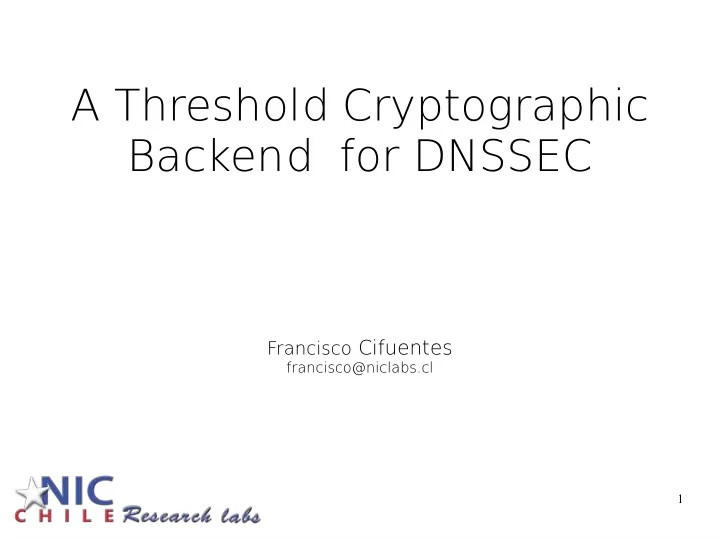

A Threshold Cryptographic Backend for DNSSEC Francisco Cifuentes francisco@niclabs.cl 1
Key Management Implementations Back to ICANN 40 2
Key Management Implementations Needs ● Zones need to be re-signed PKCS#11 periodically. ● Keys must not be cloned. Problems HSM ● Hardware fails. ● HSM are expensive. ● SoftHSM can be vulnerable. 3
What was proposed? A Threshold Cryptographic Backend. PKCS#11 Threshold Cryptographic Backend Threshold Cryptographic backend 4
Our work with OpenDNSSEC PKCS#11 Threshold Cryptographic Backend 5
Properties of the system ● Distributed ● Fault T olerant ● Robust ● Secure Cryptographic backend 6
Properties of the system ● Distributed – Private key is split into shares and distributed among n nodes. – The signing procedure is called in each of the n nodes. 7
Properties of the system ● Fault-T olerant – A subset of nodes can fail and the signing process will be completed succesfully. 8
Properties of the system ● Robust – Failures and attacks can be reduced implementing nodes in both difgerent programming languages and operative systems. 9
Properties of the system ● Secure – No one holds the complete private key. – More than k nodes have to be endangered to authorize faked signatures. 10
What it is? ● Basically, a PKCS#11 API provider. ● It uses the Threshold Cryptographic Backend implemented then. ● It actually signs DNS records. 11
What it is not? ● A fully compliant PKCS#11 implementation. 12
Future work ● Complete the PKCS#11 implementation, in order to make it usable directly from BIND (or any other software). ● T est on a real zone set. 13
Questions? Francisco Cifuentes francisco@niclabs.cl 14
Recommend
More recommend